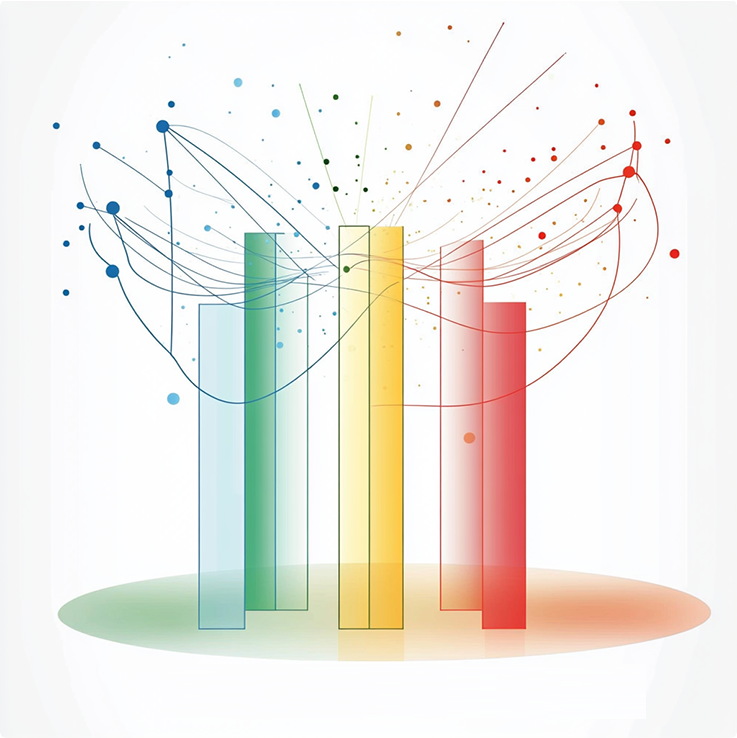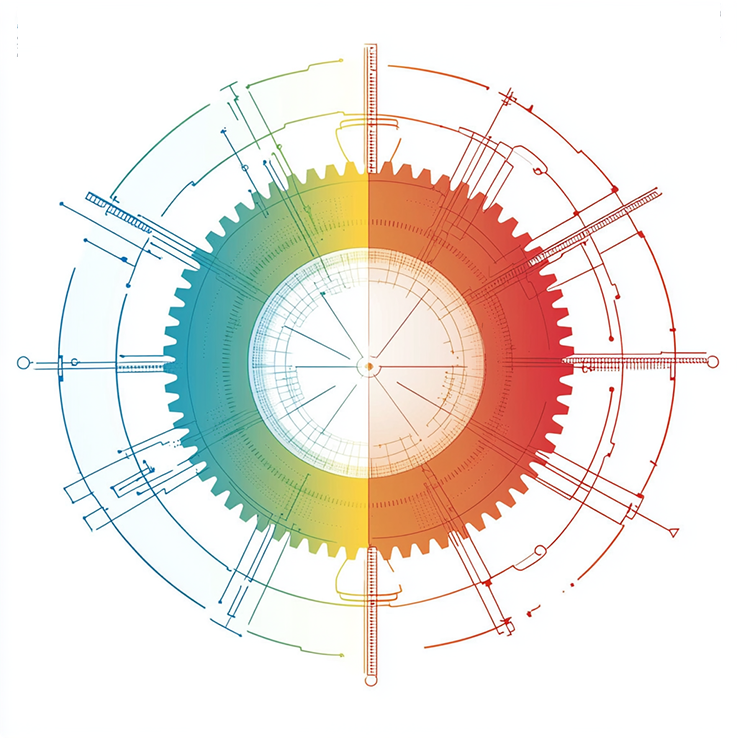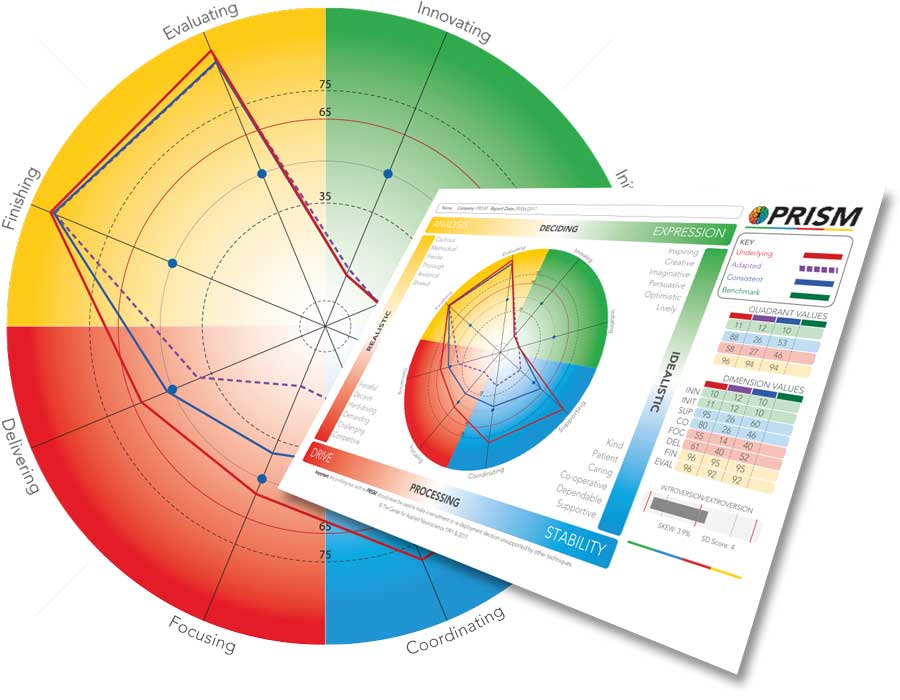A Revolutionary Approach to Understanding Behaviour
A Graphic Explanation of Behaviour
PRISM’s dynamic reports provide clear visual explanations for why people approach situations and others in distinct ways. They reveal not only one’s natural or instinctive behaviour but also how individuals adjust their responses to meet specific demands—for example, in the workplace.
By highlighting where someone may be overusing or underusing their natural tendencies, PRISM offers valuable insights into their true potential and factors that might be limiting high performance. Crucially, PRISM avoids categorising people into rigid “boxes” or assigning fixed scores. Instead, it celebrates the fluidity of human behaviour, emphasizing that as perceptions change, so too does behaviour.
PRISM’s dynamic reports provide clear visual explanations for why people approach situations and others in distinct ways. They reveal not only one’s natural or instinctive behaviour but also how individuals adjust their responses to meet specific demands—for example, in the workplace.
By highlighting where someone may be overusing or underusing their natural tendencies, PRISM offers valuable insights into their true potential and factors that might be limiting high performance. Crucially, PRISM avoids categorising people into rigid “boxes” or assigning fixed scores. Instead, it celebrates the fluidity of human behaviour, emphasizing that as perceptions change, so too does behaviour.

Professor Jeffrey M. Schwartz, M.D.
Observing and Mapping Behaviour


PRISM measures the intensity of a person’s expressed behavioural preferences across various activities. Using vibrant colours to illustrate these preferences, the PRISM maps capture the dynamic interactions within the brain. Remember, no single part of the brain operates in isolation; all thoughts, emotions, and actions are the product of many brain areas working together.
Why Was PRISM Created?
The Origins and Purpose of PRISM

At its essence, PRISM is underpinned by the fundamental idea that all behaviour is driven by the brain. It leverages the concept of neuroplasticity—the brain’s remarkable ability to rewire and adapt based on experience. In simple terms, how we think influences our brain, and our brain, in turn, shapes how we think. This insight is at the heart of many modern performance-enhancing techniques, including those used by top athletes.
How PRISM Was Developed
A Three-Stage Journey
Stage 1
Identifying Behaviour and Brain Chemistry

Researchers reviewed over 120 published studies to pinpoint the primary behavioural dimensions linked to four key brain chemical systems (involving neurotransmitters and hormones). This extensive research laid the foundation for the PRISM measurement scales.
Stage 2
Developing the Measurement Scales

Drawing from the Stage 1 data, the team created the scales needed to accurately measure the four primary behavioural groups. An initial anonymous questionnaire completed by 2,437 participants (aged 19–60) helped refine these scales, achieving an average Cronbach’s alpha score of 0.8.
Stage 3
Psychometric Validation

The final stage used traditional psychometric techniques in 2007 and 2014 to validate the scales further—confirming the instrument’s reliability with an average Cronbach’s alpha of 0.9 across eight dimensions. This rigorous validation underscores PRISM’s precision as a measurement tool.
Stage 3 is the most critical phase because it definitively demonstrates the precision of the PRISM measurement tool.
“Validity studies offered robust evidence for the accuracy and reliability of the English version of the PRISM scale. These findings are further bolstered by the diverse, international, and cross-cultural sample used in the study. What makes PRISM unique is that it is not a traditional classification tool—it doesn’t confine individuals to a single dimension. Instead, the PRISM model recognizes that everyone exhibits traits across all eight dimensions to varying degrees. The result is a unique ‘brain map’ that reveals not only an individual’s preferred working styles but also the behaviours they tend to avoid.”
More details about the validity study can be found via these links (PDF will open in a new window):
Various scientific studies have shown that the four brain chemical systems underlying PRISM influence behaviour in distinct ways. It is not just the number of brain cells but the connections and networks—the relationships among brain circuits—that are key to brain function. When these circuits are nurtured, they strengthen; when neglected, they fade. This dynamic is the essence of neuroplasticity.
In November 2013, an independent study by researchers from Einstein College of Medicine (New York), the University of California, Santa Barbara, and Rutgers University (New Jersey) examined the same four brain chemical systems used in developing the PRISM measurement scales in 2002.
For further details, please see:
Brown LL, Acevedo B, Fisher HE (2013) – Neural Correlates of Four Broad Temperament Dimensions: Testing Predictions for a Novel Construct of Personality. PLoS ONE 8(11): e78734.
What are PRISM Maps?

The PRISM model is a simplified schema of the human brain, illustrating how various chemical systems-dopamine, serotonin, testosterone, and oestrogen-work together to shape our behaviour. While modern neuroscience rejects the idea of “right-brained” or “left-brained” dominance, PRISM underscores that effective performance relies on the seamless interaction between distributed brain networks.
Our interpretation of complex neuroscientific research is designed to be accessible, ensuring that everyone-from laypersons to seasoned professionals-can benefit from the insights PRISM offers.
Watch the short introduction video
What Our Clients Say
highlighting the positive impact PRISM brain mapping
As the exclusive distributor for PRISM Brain Mapping in India, we are committed to providing unparalleled expertise, proven results, and comprehensive support for all your development needs.
Take the next step in your journey with India’s exclusive PRISM Brain Mapping tool. Let our experts guide you to transformative insights and lasting growth.




